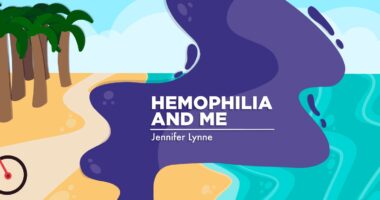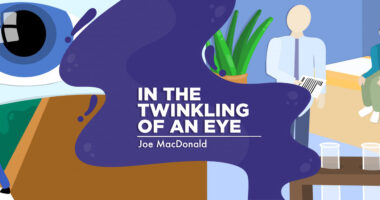What my numbness and tingling hands taught me about hemophilia
I'm learning to live with a condition that may never go away

In kindergarten, my teacher had a daily ritual: story time. My friends and I would race to the corner and sit “crisscross applesauce” on the boldly colored carpet, eagerly awaiting the story. Next to recess, it was the best part of the day.
The teacher read with excitement, allowing us to imagine unique characters and faraway places. We were captivated. But after story time, standing up was sometimes painful. My legs would fall asleep! The tingling sensation from my toes to my knees felt like hundreds of needles piercing my skin. I’d limp to my desk, shaking my legs until they woke up.
Decades later, I still experience the same kind of tingling, but it’s become constant. For almost two years, my hands have been numb because of a compression on my spinal cord that’s damaged my nerves. Fortunately, surgery has improved my condition, but the numbness, while slowly improving, remains. The constant tingling is a sign that my body is healing.
Sometimes it’s been painful. This numbness is like an uninvited companion that shapes how I move, what I carry, and how I interact with the world. I wish I could shake off this feeling as I did in school, but I must adapt every day. This relentless presence has changed how I think about my sons and their lives with hemophilia.
Adapting to life with a chronic condition
Both of my sons, Julian, 29, and Caeleb, 19, were diagnosed with severe hemophilia A shortly after birth. Their journeys with the bleeding disorder have been very different, but they share one unchanging reality: Hemophilia is always with them, whether they like it or not.
There are no vacations from the condition. Throughout their childhood, preparing for unforeseen circumstances was critical. We always infused before an activity and brought extra factor and supplies on outings. Sometimes we had to make decisions regarding safety that wouldn’t have been a consideration for children without a bleeding disorder. Those instances were often challenging.
My sons have learned to listen to their bodies and now have a sixth sense that tells them when they’re in the early stages of a joint bleed. Caeleb, for instance, can easily feel the “buzzing” in his knee that indicates the beginning of a bleed. Years of joint damage and physical and mental anguish have fine-tuned his senses. Like my sons, I’ve learned to listen to my body’s signals.
Another similarity between our conditions is invisibility. My hands look fine, and unless I explain to someone the constant pins-and-needles sensation I experience, they’d never know about my discomfort.
Hemophilia is just as hidden. Strangers don’t see the scars from infusion sites or the divots in flesh from past ports, and joint damage is often invisible to the naked eye. My sons look healthy. For Julian, living with hemophilia has forced him to be vigilant with his care so he can remain relatively healthy. However, Caeleb has suffered numerous complications that make his healthy appearance deceptive.
The difference between me and my sons is that my numbness is constant for now, but I’m hopeful it will resolve. For Julian and Caeleb, hemophilia isn’t something they’ll outgrow. It’s a permanent companion.
Numbness has slowed me down and pushed me to ask for help, causing me to view my sons in a new light. I see their quiet strength as they navigate a world that often doesn’t accommodate them. Though their bleeding disorder demands constant attention, my boys manage it with resilience, determination, and a sense of humor.
As a child, I could shake off the discomfort and walk away. Now, it’s not as easy for me — and it’s something my sons have never been able to do.
My numb hands and unrelenting frustration remind me that healing takes time. Even if the feeling in my hands never returns completely, life is still full of possibilities.
My sons have known this truth all their lives, and now I do, too.
Note: Hemophilia News Today is strictly a news and information website about the disease. It does not provide medical advice, diagnosis, or treatment. This content is not intended to be a substitute for professional medical advice, diagnosis, or treatment. Always seek the advice of your physician or another qualified health provider with any questions you may have regarding a medical condition. Never disregard professional medical advice or delay in seeking it because of something you have read on this website. The opinions expressed in this column are not those of Hemophilia News Today or its parent company, Bionews, and are intended to spark discussion about issues pertaining to hemophilia.







Mary Lou Cameron
I have always admired your family continue in many areas in spite of the challenges.